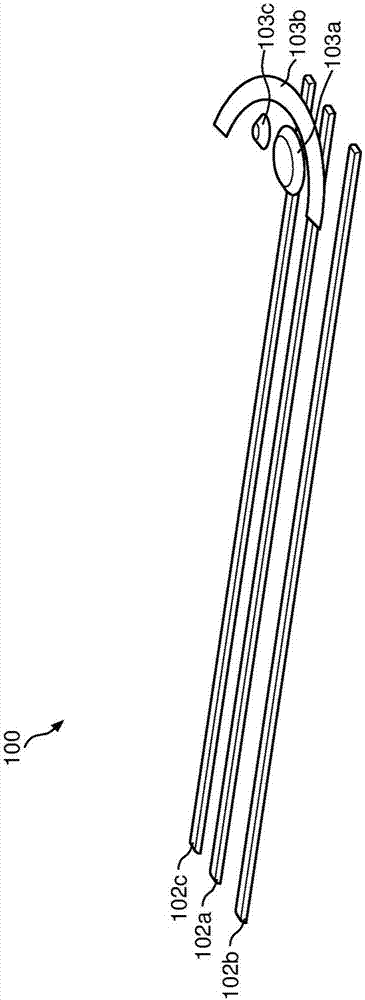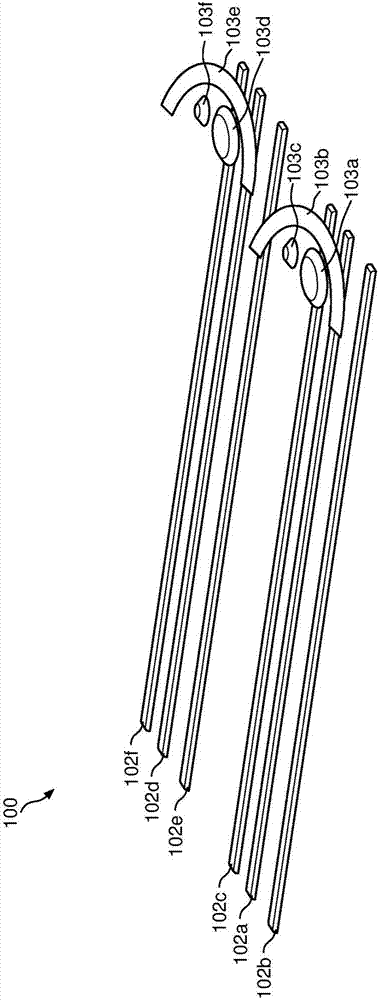Device and method for detection of haemoglobin and its complexes
A technology of hemoglobin and complexes, applied in the field of biosensors for biological analytes, can solve problems such as the difficulty of direct electrochemical detection of hemoglobin
- Summary
- Abstract
- Description
- Claims
- Application Information
AI Technical Summary
Problems solved by technology
Method used
Image
Examples
Embodiment 1
[0226] Example 1: Using pyridine and NaOH as receptors to measure blood hemoglobin concentration and corresponding reduction current
[0227] 1.5ml whole blood was lysed with 4ml cold deionized (DI) water. 2ml of 1% NaOH was added to the lysis solution to convert the hemoglobin component into methemoglobin. 1.5 ml of pyridine was added to the methemoglobin solution to convert it into pyridine methemochromogen. From this master solution, hemoglobin solutions of different concentrations are prepared by appropriately diluting the pyridine methemochromogen solution. A final volume of 300 μL was used for testing.
[0228] Obtain the required volume of blood sample and distribute it on the electrodes of the biosensor device, and obtain the corresponding cyclic voltammogram by using the value of the CHI electrochemical workstation. The potential window used varies from 0.4V to -1.2V, The scan rate is 0.6V / sec, as shown in Figure 21(a).
[0229] The cold DI water lyses the RBC in the blo...
Embodiment 2
[0236] Example 2: Measurement of hemoglobin using pyridine and NaOH receptors
[0237] A 300 μL sample volume of pyridine methemochromogen was placed on the electrode, and then the peak reduction current value was recorded from the cyclic voltammogram with a potential window of 0.4V to -1.2V in the CHI electrochemical workstation. The measured value of the peak reduction current is 238 μA. Find the current value in Table 1, and retrieve the corresponding hemoglobin concentration of 2.4g / dL.
Embodiment 3
[0238] Example 3: Using pyridine and NaOH as receptors to determine the blood hemoglobin concentration in the physiological range and the corresponding reduction current
[0239] 1.5ml whole blood was lysed with 4ml cold deionized water. 2ml of 1% NaOH was added to the lysis solution to convert the hemoglobin component into methemoglobin. Solid bovine hematin is added to the solution to further increase the methemoglobin content in the physiological range. Then 1.5ml of pyridine was added to the methemoglobin solution to convert it into pyridine methemochromogen. From this master solution, hemoglobin solutions of different concentrations are prepared by appropriately diluting the pyridine methemochromogen solution. A final volume of 300 μL was used for testing.
[0240] Obtain the required volume of blood sample and distribute it on the electrodes of the biosensor device, and obtain the corresponding cyclic voltammogram by using the value of the CHI electrochemical workstation. ...
PUM
 Login to View More
Login to View More Abstract
Description
Claims
Application Information
 Login to View More
Login to View More - R&D
- Intellectual Property
- Life Sciences
- Materials
- Tech Scout
- Unparalleled Data Quality
- Higher Quality Content
- 60% Fewer Hallucinations
Browse by: Latest US Patents, China's latest patents, Technical Efficacy Thesaurus, Application Domain, Technology Topic, Popular Technical Reports.
© 2025 PatSnap. All rights reserved.Legal|Privacy policy|Modern Slavery Act Transparency Statement|Sitemap|About US| Contact US: help@patsnap.com



